Review: Nokia 5300
Screen
The 5300's screen measures 2 inches. It provides enough real estate to interact with the phone without issue. And the 5300's QVGA resolution helps render images accurately, with little pixelation or noise.
The 5300's screen is bright and displays colors accurately. Though pictures looked monochrome in sunlight, dialing the phone with the sun shining on the screen was easy thanks to the large numbers and good choice of background colors. Viewing Web sites that had white backgrounds wasn't quite as easy. Darker environments let the brightness and saturation of the screen really come through. Photos, menus and pictures practically jumped from the screen.
Signal
Like all GSM phones, the 5300 has just one set of bars to indicate signal strength. It consistently held onto 4 of 4 bars in my NJ home. If I walked down to my basement, coverage dropped to 2 bars, but making phone calls and initiating data sessions were not a problem. At one point in our time with the 5300, we were deep inside a hospital, and the 5300 still retained 1 bar of service, compared to a Verizon phone that lost its signal completely. When you launch T-Mobile's T-Zones, a small little "G" appears with a circle around it to let you know you've established a data connection.
Driving around the metro NYC area, we didn't experience a single dropped call. Signal strength averaged 2 or 3 bars in most areas. The only place we lost the signal was driving through the Lincoln Tunnel, which was surprising given T-Mobile's strength in New York City. The 5300 still managed to hold onto 1 bar of service in another area that has typically bad coverage no matter what the provider is.
Sound
The earpiece speaker was disappointingly quiet. Even set to full volume, calls were sometimes difficult to hear in moderately noisy environments like the supermarket or walking down a city street. If you're frequently in crowded places, plan to go outside to make your calls, as there's just no way you're going to hear your caller - unless you want to use the speakerphone.
Sound quality for the earpiece was good. We didn't hear any crackling and it was nearly indistinguishable from a regular phone in terms of voice quality. The speakerphone also sounded very good.
The speakerphone for the 5300 is unbelievably loud. At full volume, it is so distorted it is simply unusable. Using it with a setting of 4 or 5 out of 10 was often adequate. Even at lower volumes, we would not advise using the speakerphone in public unless you're happy to share your conversation with everyone around. Once, we were able to hear muzak blaring over the 5300's speakerphone not only several rooms away, but with the phone on a table downstairs.
The one thing good about this is the speakerphone speaker is the same one that's used for the ringer (and music player). Set to full volume, you will likely never miss a call. Even at medium settings, the 5300 is quite audible. The same can't be said for the vibrating alert, however. When set to vibrate, we missed calls about 50 percent of the time.
You can read more about the quality of the music player sound in the music player section.
Battery
If you don't use the 5300 all that much, the battery needs recharging every 3.5 days. We're talking minimal usage here, just leaving the phone on stand-by. If you're like most people and do some text messaging, Web browsing, phone calls, the music player (~1 hour per day) and Web surfing, battery life is quickly sapped in 2.5 days or less. With the Bluetooth radio on constantly, the battery needed charging every 2 days.


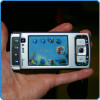 Nokia Open Studio Fall 2006
Nokia Open Studio Fall 2006
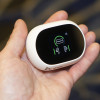 Hands On with Teams-Certified Bluetooth Earbuds
Hands On with Teams-Certified Bluetooth Earbuds
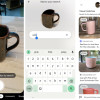 Google Lens Now Lets You Refine a Visual Search with Text
Google Lens Now Lets You Refine a Visual Search with Text
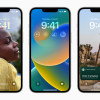 iOS 16 Revamps the Lock Screen
iOS 16 Revamps the Lock Screen
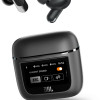 JBL Puts a Touchscreen on its Earbuds Case
JBL Puts a Touchscreen on its Earbuds Case
 Nokia 5300
Nokia 5300


